Abstract
Embryogenesis of the free-living soil nematode Caenorhabditis elegans produces a juvenile having about 550 cells at hatching. We have determined the lineages of 182 cells by tracing the divisions of individual cells in living embryos. An invariant pattern of cleavage divisions of the egg generates a set of stem cells. These stem cells are the founders of six stem cell lineages. Each lineage has its own clock--i.e., an autonomous rhythm of synchronous cell divisions. The rhythms are maintained in spite of extensive cellular rearrangement. The rate and the orientation of the cell divisions of the cell lineages are essentially invariant among individuals. Thus, the destiny of cells seems to depend primarily on their lineage history. The anterior position of the site of origin of the stem cells in the egg relates to the rate of the cell cycle clock, suggesting intracellular preprogramming of the uncleaved egg. We used a technique that allows normal embryogenesis, from the fertilized egg to hatching, outside the parent under a cover glass. Embryogenesis was followed microscopically with Nomarski interference optics and high-resolution video recording.
Full text
PDF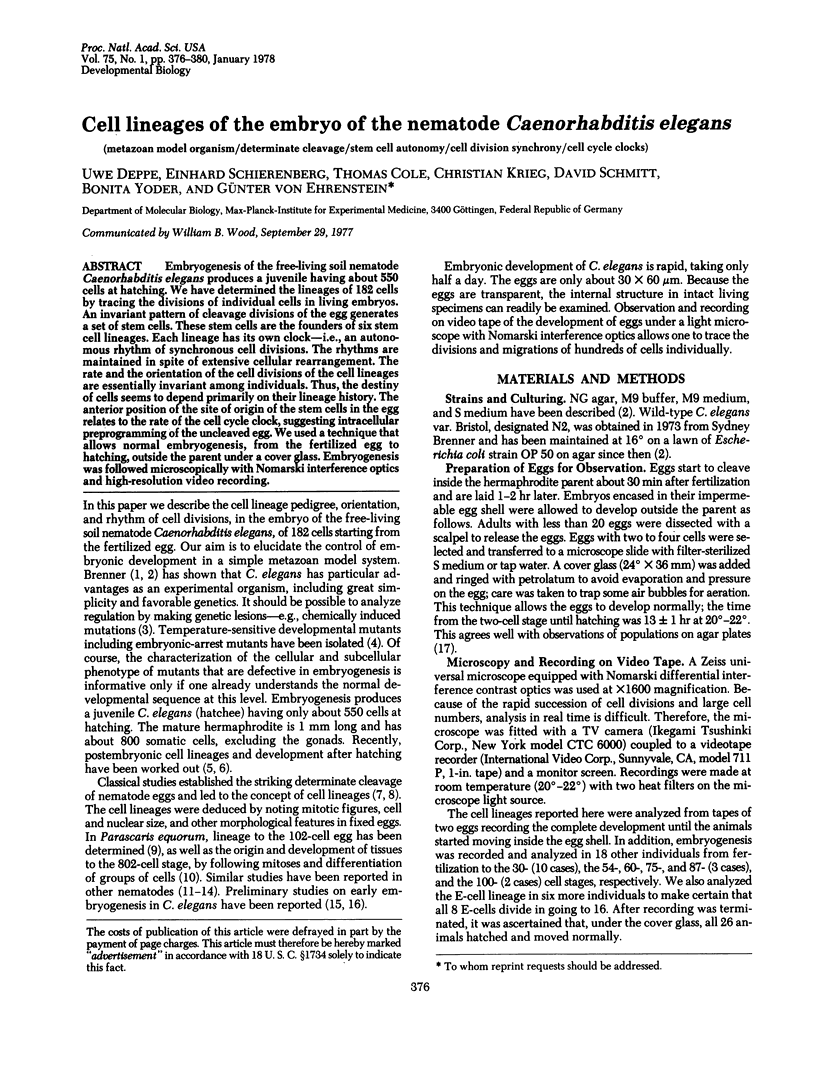
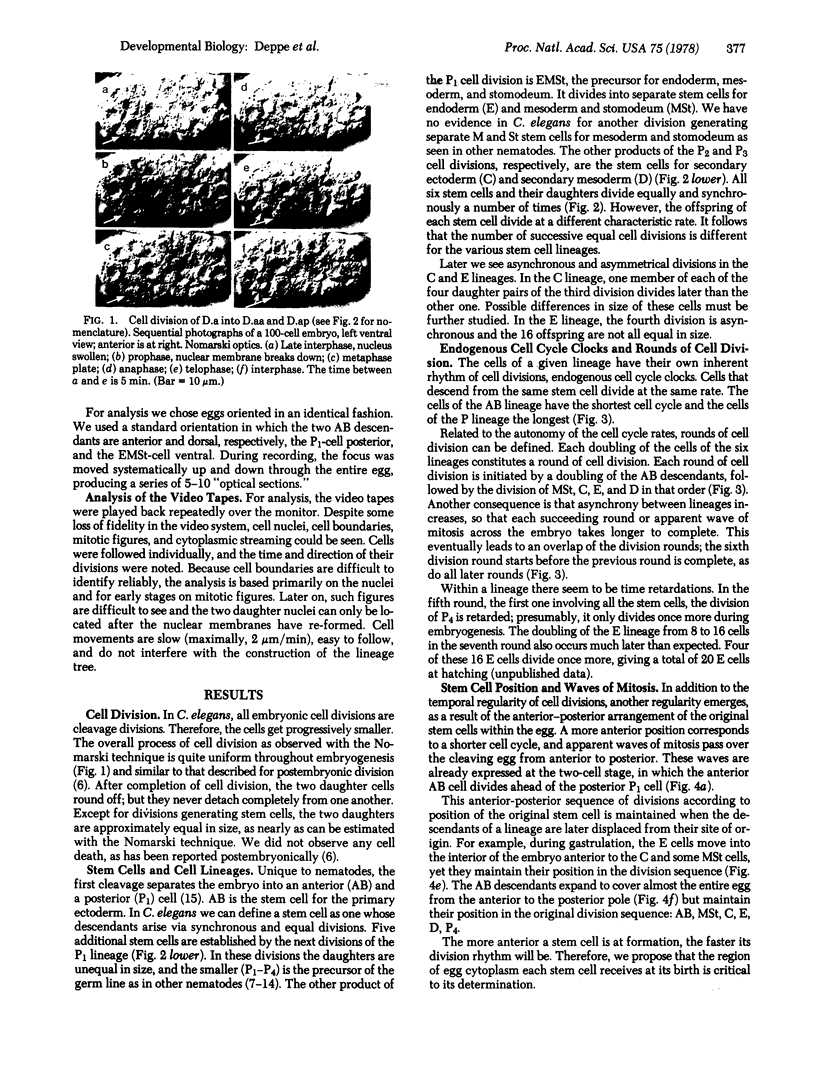
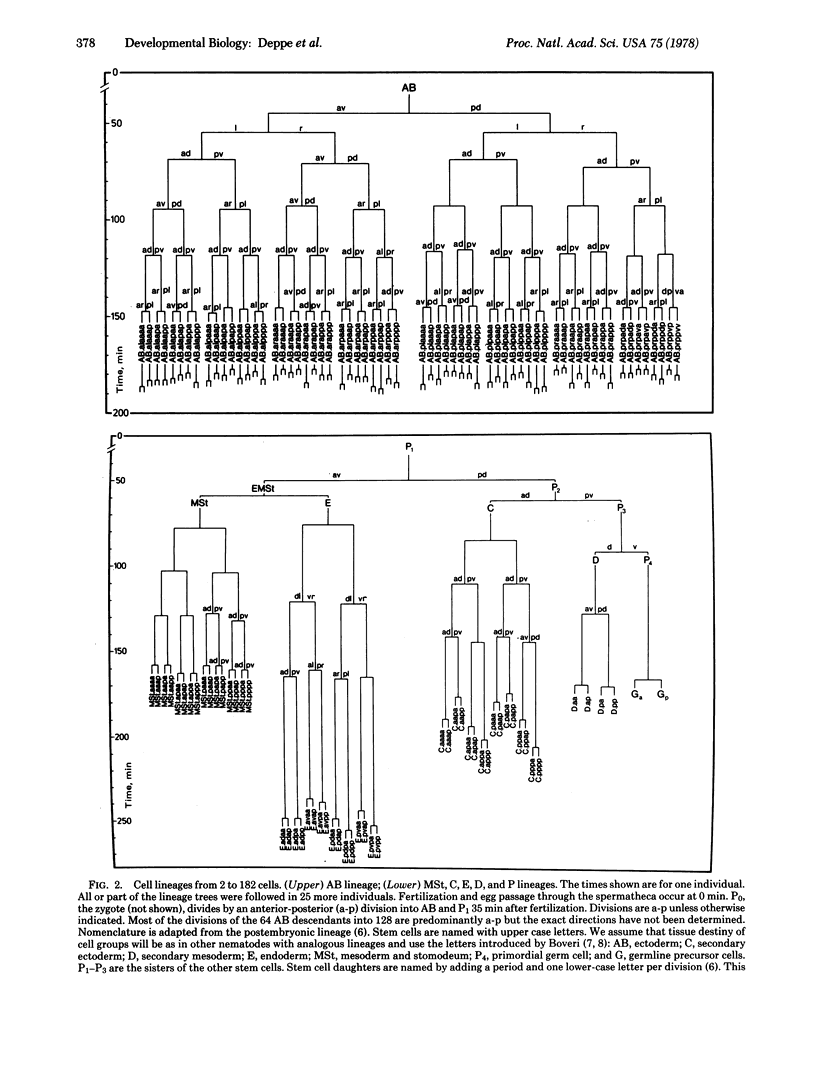
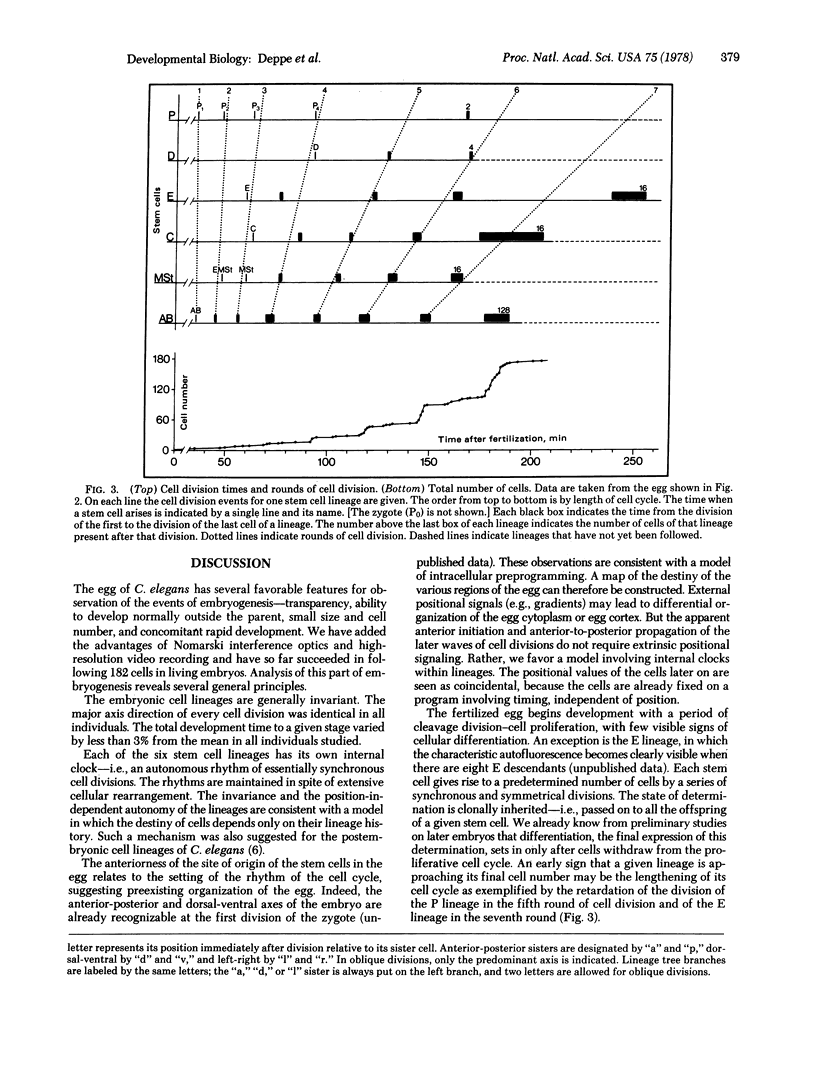
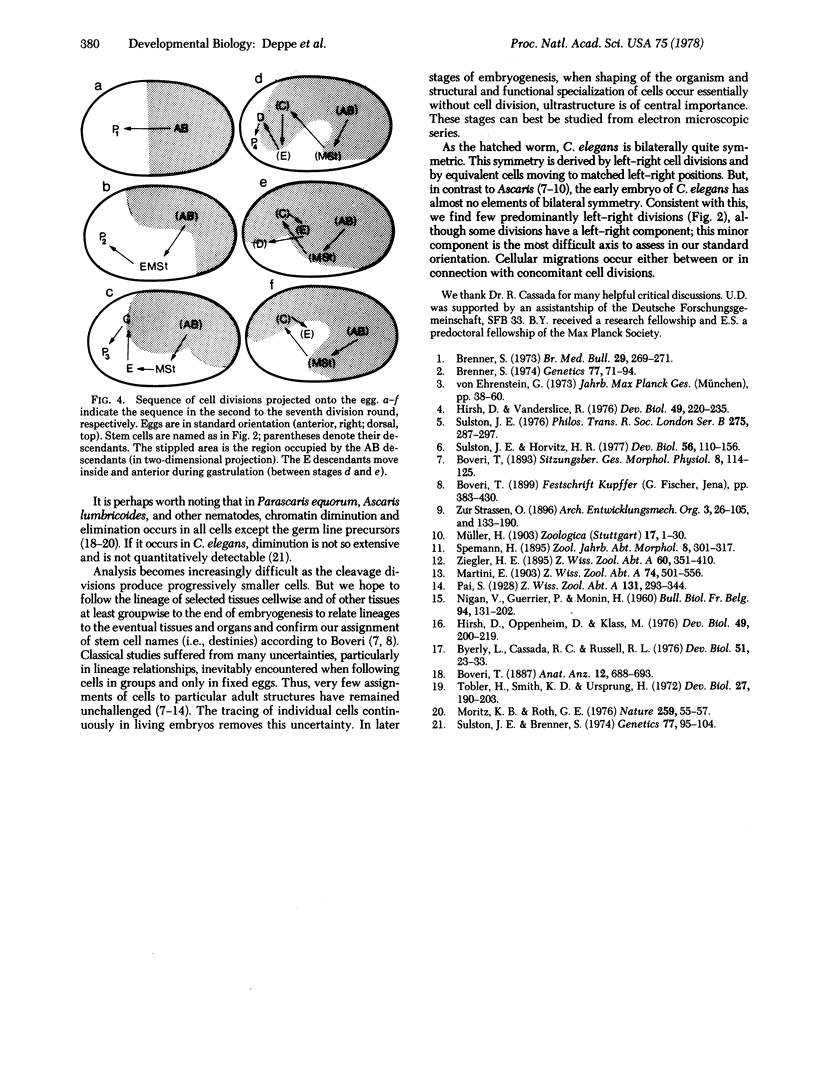
Images in this article
Selected References
These references are in PubMed. This may not be the complete list of references from this article.
- Brenner S. The genetics of Caenorhabditis elegans. Genetics. 1974 May;77(1):71–94. doi: 10.1093/genetics/77.1.71. [DOI] [PMC free article] [PubMed] [Google Scholar]
- Brenner S. The genetics of behaviour. Br Med Bull. 1973 Sep;29(3):269–271. doi: 10.1093/oxfordjournals.bmb.a071019. [DOI] [PubMed] [Google Scholar]
- Byerly L., Cassada R. C., Russell R. L. The life cycle of the nematode Caenorhabditis elegans. I. Wild-type growth and reproduction. Dev Biol. 1976 Jul 1;51(1):23–33. doi: 10.1016/0012-1606(76)90119-6. [DOI] [PubMed] [Google Scholar]
- Hirsh D., Oppenheim D., Klass M. Development of the reproductive system of Caenorhabditis elegans. Dev Biol. 1976 Mar;49(1):200–219. doi: 10.1016/0012-1606(76)90267-0. [DOI] [PubMed] [Google Scholar]
- Hirsh D., Vanderslice R. Temperature-sensitive developmental mutants of Caenorhabditis elegans. Dev Biol. 1976 Mar;49(1):220–235. doi: 10.1016/0012-1606(76)90268-2. [DOI] [PubMed] [Google Scholar]
- Moritz K. B., Roth G. E. Complexity of germline and somatic DNA in Ascaris. Nature. 1976 Jan 1;259(5538):55–57. doi: 10.1038/259055a0. [DOI] [PubMed] [Google Scholar]
- Sulston J. E., Brenner S. The DNA of Caenorhabditis elegans. Genetics. 1974 May;77(1):95–104. doi: 10.1093/genetics/77.1.95. [DOI] [PMC free article] [PubMed] [Google Scholar]
- Sulston J. E., Horvitz H. R. Post-embryonic cell lineages of the nematode, Caenorhabditis elegans. Dev Biol. 1977 Mar;56(1):110–156. doi: 10.1016/0012-1606(77)90158-0. [DOI] [PubMed] [Google Scholar]
- Sulston J. E. Post-embryonic development in the ventral cord of Caenorhabditis elegans. Philos Trans R Soc Lond B Biol Sci. 1976 Aug 10;275(938):287–297. doi: 10.1098/rstb.1976.0084. [DOI] [PubMed] [Google Scholar]
- Tobler H., Smith K. D., Ursprung H. Molecular aspects of chromatin elimination in Ascaris lumbricoides. Dev Biol. 1972 Feb;27(2):190–203. doi: 10.1016/0012-1606(72)90097-8. [DOI] [PubMed] [Google Scholar]



